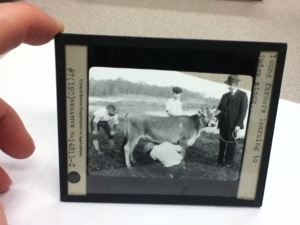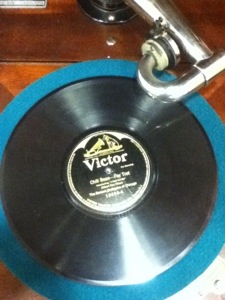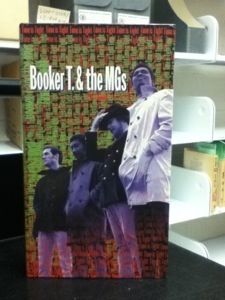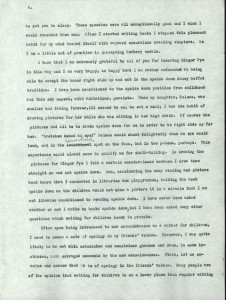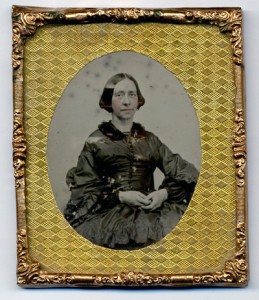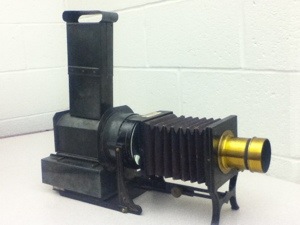Lantern slide from College of Agriculture Records
Author Archives: Kristin Eshelman
Caught My Eye Today
Caught My Eye Today
Caught My Eye Today
Insights on a Fellowship
Glastonbury, Conn., English teacher David Polochanin was recently awarded the James Marshall Fellowship, as he pursues to write young adult literature as part of a yearlong sabbatical. During his research, he will write an occasional series of blog posts, based on his observations and insights relating to the contents of the Northeast Children’s Literature Collection at the University of Connecticut. This is the second in the series.
Blog post 2: On The Psychology Of Writing
“You may think that this is the first Newbery acceptance speech I have ever made. But it isn’t. Long ago, before I ever wrote a book, when I was a children’s librarian and first aware of the Newbery Medal, I used to often put myself to sleep at night making speeches accepting this coveted award. These speeches were all exceptionally good and I wish I could remember them now. After I started writing, I stopped this pleasant habit, for my mind busied itself with wayward excursions creating chapters for… books.”
Excerpt from Eleanor Estes’ 1952 Newbery Medal speech for her book Ginger Pye
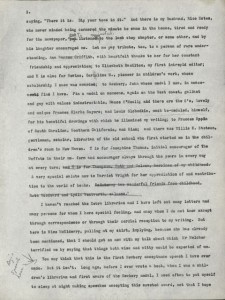
Within the publishing industry, there is a genre subset that exists mainly because of the uncertainty, mystery, and pressure that all writers face – the self-help writing guide. New books are sold every year, offering expert advice on such writerly, often impossible, things as how to summon the muses, where characters come from, the best ways to begin and end a story, if outlining is necessary for everyone, as if these were insider secrets only known to a few. Still, we learn that some authors write early in morning; others late at night. Some claim the best ideas come while taking long walks; others write what they dream and form stories around that.
To prove the marketability of such books, there is still a shelf at your local Barnes and Noble and the UConn Co-op reserved for such titles as John Gardner’s The Art of Fiction, Ray Bradbury’s Zen In The Art Of Writing, Stephen King’s On Writing: A Memoir Of The Craft, Natalie Goldberg’s Writing Down the Bones: Freeing The Writer Within, Anne Lamott’s Bird By Bird: Some Instructions on Writing and Life, and Strunk and White’s The Elements of Style, among others.
As a writer, especially at the beginning, during those fledgling phases when you’ve got 40 pages of something and it isn’t going so well, it’s hard not to look at these books. They are indeed tempting to read. Teachers at the college level routinely assign them as class texts, and the content is often useful, if not entertaining. I’ve bought a bunch of them myself, and every now and then, I return to them for inspiration or direction.
So, what makes me bring up the self-help industry for writers? A progressive-minded document from 1952.
Browsing through the Eleanor Estes papers recently I came upon several drafts of her Newbery Medal speech, given in 1952 for her book Ginger Pye, which stopped me in my tracks. As I read the draft, complete with cross-outs and edits, I stopped at the excerpt at the top of this post and had to reread it. I copied it verbatim on my yellow legal pad. Estes, a former librarian in New York City, said this was not her first speech. She had given many of them, in her head, putting herself to sleep at night imagining that she had won the award. What she was saying could have easily been included in a how-to-write guide; it still could.
With so much written about the psychology of writing – directly or indirectly – the truth remains elusive. What works for some will not work for all. I know for a fact that I do not have the motivation to write at 4:30 a.m., as some writers do. My most productive work time is sometime between 10 a.m. and 2 p.m. It used to be from 9 p.m. to midnight, before my kids entered the picture. I have had numerous ideas come to me while on bike rides and while driving my car, though I would hesitate to say there is a direct correlation between generating writing ideas and movement. Perhaps through doing these activities, my mind has an opportunity to clear out some space for creative thought. But who really knows.
Reading from superior examples in the genre you’re writing seems to help warm up the brain. Perhaps it’s nothing more than mere imitation. But is this scientifically based? I doubt it, or know if it can be. Still, Ted Kooser, the Pulitzer Prize winning poet who has been the U.S. Poet Laureate, in interviews says he has done this, as have many other writers. When I was a journalist at the Providence Journal, before a major assignment an editor once sent me a handful of front-page feature stories from the Wall Street Journal before I started to write one of my own. I did “channel” something from those stories, but I think I was too young to figure out how the articles she sent could help me.
Nevertheless, I guess the Estes comment surprised me because of the time period in which she wrote it, and also because it still makes so much sense today. How could it not help to imagine doing the very thing you want to do? Isn’t visualization/imagery the most primitive version of positive psychology? Estes was priming her brain to write great works, and her nightly fantasizing ritual ultimately gave her a tight focus and, quite likely, a motivation.
It worked for her. Could it work for others?
Sifting through boxes of manuscripts in the Northeast Children’s Literature Collection, I suppose, can have a similar effect: to gain a psychological edge in the writing process. It’s easy to forget sometimes that writing is truly an art form, and that artists need inspiration and particular conditions in order to do it well. Whether it’s writing near the window at Starbucks, which seems to be a favorite for many, or in a secluded study room at a library, I’m not sure if there are any big secrets that will work for everyone. The trick, I think, is discovering what will work for you.
Caught My Eye Today
Caught My Eye Today
“Timmy Trapped on Mars”: What Makes Failed Pitches “Bad”? by Tanya Rose Lane
For almost two years, I have been blessed with the incredible opportunity to work under Terri Goldich, the curator for the Northeast Children’s Literature Collection located in the Thomas J. Dodd Research Center. That’s right– not only do I get to work hands-on with sketches, dummies, and correspondence from children’s authors and illustrators but I also get paid for it! My most interesting assignment, by far, has been performing the box inventory and description for the Mo Willems Papers. Hailing from New Orleans and a graduate of NYU’s Tisch School of the Arts, Mo Willems is a wildly successful children’s author, illustrator, animator, and Caldecott Medal recipient. With animation credits that include Sesame Street, shows on both Nickelodeon and Cartoon Network, plus the popular Pigeon book series, it is hard to believe that Mo Willems has entire boxes within his collection here dedicated to failed pitches. Why did some of Mo’s seemingly most fun and interesting ideas get rejected by editors and animation networks? But, alas, there must be reasons why some artists’ creative ideas never quite come to life and I set out to investigate those reasons.
The possible answer to my question lies within an overcrowded box deep within the shadows of the stacks (let me just note that, as a library assistant, the storage technique authors often use of stuffing every document they’ve ever owned into boxes that won’t hold all of them is both irritating and humorous). After I managed to yank the folder entitled “Failed Pitches” out of one of Mo’s boxes, I came across an interesting set of sketches and animation designs that were clearly from the beginning stages of an animated T.V. show. The show in question, “Timmy Trapped on Mars” was an idea that Mo pitched in 1998. The plot is essentially this: while on a walk through his suburban neighborhood, Timmy and his pet goldfish are abducted by a passing UFO. When taken to Mars, the aliens there identify Timmy’s fish Cleveland as a superior being. Cleveland soon is out to get Timmy for drowning him and feeding him nasty flakes daily while on planet Earth. Timmy’s only new friend, Bubba, is his guide while he is trapped on Mars.
Artwork and animation: Willems, Mo. “Timmy Trapped on Mars”. May 1998. Mo Willems Papers, Box #4, “Failed Pitches”. Archives and Special Collections at the Thomas J. Dodd Research Center. All rights reserved. No reproduction of any kind allowed.
When I went through Mo’s notes that accompanied his artwork, I soon saw how he tried to identify possible aspects of the animated show that might not have “worked” with networks. It seems that in order to get the green light on this T.V. show, Mo would have had to find a way to have Timmy act as an active protagonist instead of a sad main character constantly “pining” for planet Earth. He would also need to find a way to make the main dynamic of Cleveland vs. Timmy interesting and turn their relationship into one that is more complicated and complex. In his notes, Mo mentioned that he wanted to explore the role reversal with the fish as the ruler and the boy as a pet. This is where I think things could have gotten complicated and potentially unattractive to television networks. Mo Willems is known for his dark, satirical work where he satirizes adult authority and rules, something that definitely works in projects like the Pigeon books. However, the idea of role reversal here and challenging rules might not have gone over well with T.V. producers. The outer space setting also brings attention to another topic wrought with tension, that being the environment. By going to outer space and switching things up, Timmy’s situation makes me think, at least as an adult, that perhaps we earthlings are the ones who have things backwards. All of this might have been viewed as too political for an animated show for children or, maybe, producers just thought the plot had no lasting power. Maybe there were too many animated shows in 1998 about outer space or goldfish; it could have been absolutely anything. What do you think?
Caught My Eye On Valentine’s Day
Insights on a Fellowship
Glastonbury, Conn., English teacher David Polochanin was recently awarded the James Marshall Fellowship, as he pursues to write young adult literature as part of a yearlong sabbatical. During his research, he will write an occasional series of blog posts, based on his observations and insights relating to the contents of the Northeast Children’s Literature Collection at the University of Connecticut. Polochanin’s work has been widely published in major newspapers in New England, including The Boston Globe, Providence Journal, and Hartford Courant. His education writing has appeared in Education Week and Middle Ground, and his poetry has been included in an anthology by Native West Press, and will be published in the prose poetry journal Sentence.
Blog Post 1: On Production
Combing through the archives of this collection has been fascinating, and an extraordinary opportunity. Since my days as a reporting intern for the Boston Globe nearly 20 years ago, I’ve been interested in authors’ behind-the-scenes writing process – perhaps because the art of creation is typically so mysterious. After all, when authors are interviewed by admirers, one of the first questions they are asked is, “How did you write this?” or “Where did the idea come from?”
I am not so much interested in where ideas come from, but I am intrigued with the process of writing itself.
In a way, I am learning that it is not so complicated.
While I have examined only a fraction of what the Northeast Children’s Literature Collection holds, I am struck by the sheer production of some of these authors, the volume of work they have created, and that, it would seem, an author’s ability and determination to produce such large amounts of work are major factors leading to publication, success, accolades, fame. This drive ultimately distinguishes a recreational writer, I think, from writers who earn a living by writing, particularly as a creative writer, for adults and children alike.
Their success is not reliant upon talent, alone.
It takes tenacity to produce. I am reminded of an interview I read recently with Newbery Medal winning author Kate DiCamillo, posted on the website ReadingRockets.org. She said, “I’ve been in so many writing workshops, writing classes, and to the right of me and to the left of me, there’s always somebody much more talented than I am. And what I figured out is they’re not willing to go through the rejection, which is enormous, and then the compromise that comes with editing your work. I decided a long time ago that I didn’t have to be talented. I just had to be persistent, and that that was something that I could control — the persistence. I’ve always been kind of persistent.”
Again and again in author interviews, this is a common refrain. In order to publish your work, one must work hard. Sounds simple. But the determination involved when there are dozens of things vying for our time, is remarkable. It means casting these distractions – the Internet, TV, the laundry, the long shower – aside to sit somewhere and write for extended periods of time. In today’s society, a place where patience is underrated, this kind of discipline is increasingly difficult.
So when I look through boxes of drafts, notes, and manuscripts by such celebrated children’s authors as Eleanor Estes and Ruth Krauss, whose works are well represented in the Northeast Children’s Literature Collection, seeing the sheer amount of their work stacked in box after box on the shelves in the back room, you begin to get a sense of why these are noteworthy writers and why their work is housed in a university archive.
Writing is a way of life. And you can tell that many of the writers here have dedicated their lives to the craft, to creating stories, poetry, or nonfiction. They have been prolific producers. It’s not unlike any other line of work that requires intense focus and discipline in order to rise to the top of a profession. The best physicians are often board-certified, keep up with current research, and teach young doctors in training; the best NBA players spend hours beyond their usual practice and game time to practice three-pointers and free throws and watch video of their games.
‘Consuming’ is the right word to describe this sort of dedication.
In his book The Outliers, author Malcolm Gladwell theorizes that it takes 10,000 hours to become an expert at a craft, including reaching the highest levels of achievement in business, technology, sports, and music. I’d argue the same goes for writing. Over 10 years, that’s 1,000 hours a year, or 83 hours a month, 19 hours a week, or about three hours a day. Of course, this is provided that you write every day.
Poring through this collection’s files and folders and the sheer volume of production included here makes it clear, at least in my mind: the more a writer produces, the more likely they are to get published, and the more likely one is to eventually publish work of enduring value. Kate DiCamillo has it right: First comes a stubborn persistence, then comes talent.
Caught My Eye Today
Caught My Eye Today
Introducing Caught My Eye Today, a new weekly series in which we will post a photograph of something in the collection that deserves a second look. In this age of whirling and intangible information and the deafening chatter about all things digital, the artifactual value of physical objects often reaches out, grabs hold and demands our attention. In this series we will obey the call of the material and quietly look longer, harder and again at what we have collected. Look for a post this week.

